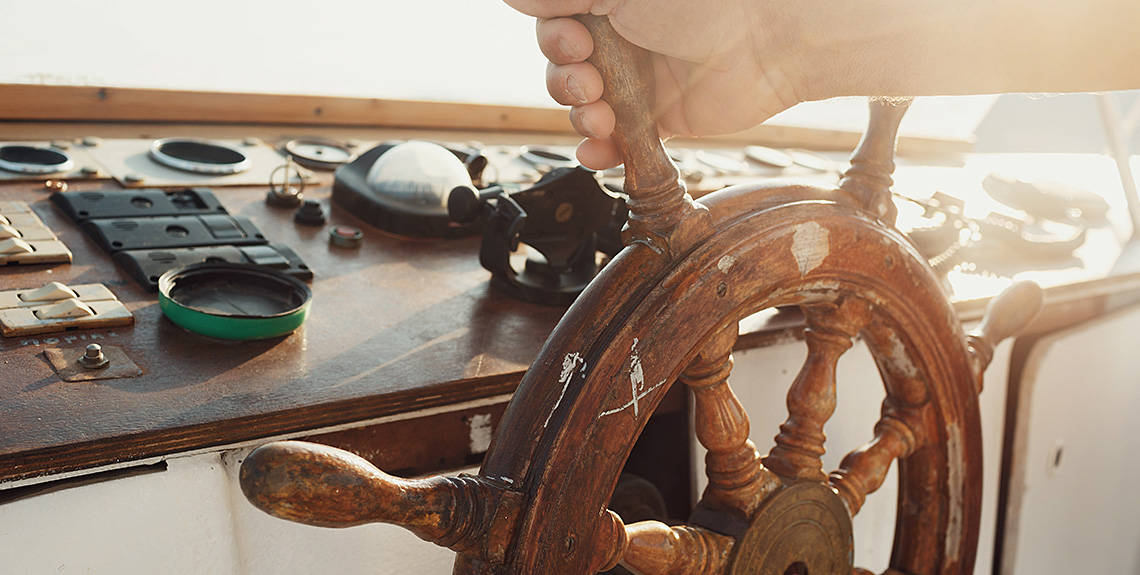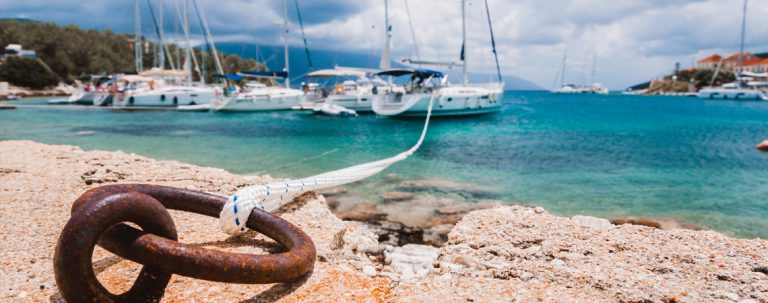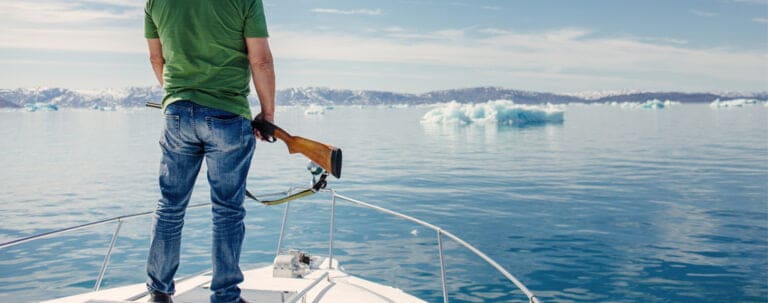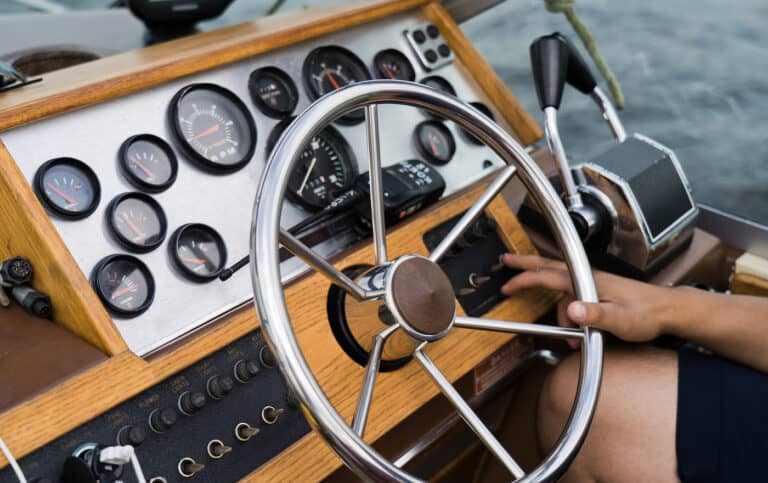Sailing implements ecstatic feelings in us, and it is a fantastic achievement in life; that’s why we busy our minds questioning how to learn to sail.
First, you find a sailing school, then devote time and money to sailing, your new hobby, both in equipment and sailing school costs.
- How Long Does It Take to Learn to Sail
- Sailing Certificates Explained
- How Hard Is It to Learn to Sail
- How Much Does It Cost to Learn Sailing?
- What Are the Minimal Requirements?
- Where Do You Learn to Sail?
- How to Choose a Sailing School?
- Best Sailboats to Learn to Sail on
- What Else May Help to Learn to Sail
- How To Learn To Sail – Summary
How Long Does It Take to Learn to Sail
One month! Though it is a philosophical question, apart from that, learning to sail takes roughly one calendar month or two, depending on how much spare time you are ready to allocate for that.
By this, we expect you are not obsessed with setting the world’s best time record in learning how to sail. You’d better give it time rather than apply on the fastest fast track out of all fast tracks in the market.
Secondly – you’d better realize, what in particular you are going to accomplish, what your future sailing time looks like, under which conditions you are going to cruise, and how deep you want your knowledge to be.
How to learn to sail is actually a very wide definition. Let me explain.
In my case, it took one whole month from zero to hero, which included living on board a sailing boat during the whole period, a lot of practice, including night navigation, and the certification exams. I’ve mentioned night navigation out of many subjects in a course because such gives already a different license; therefore, it takes slightly longer to practice.
HINT A hint for you – try to realize that you can assemble your sailing course from what you want to learn and how much practice you add on top of the cocktail (apart from all mandatory things, of course).
- 3-5 days to get a minimal understanding of how the whole thing works; the term of the introductory course shall be this short. Convenient enough as some people want to feel if they like sailing or not, for a start. You won’t get anything allowing you to captain a boat on the fifth day, of course! However, you’ll catch the idea, feel the sea, understand the wind, and you’ll be able to play with a dinghy, which is fun.
- 2-3 weeks shall make you already a real skipper. This is already what we call “to know the ropes.” Such course shall include navigation rules, anti-collision rules, basic chart work, basic radio, and everything minimally required to skipper a boat, take her in the morning, have a picnic, swim, fish, or all at once, and return in the evening.
The first part, as we mentioned above, is numbered 101 in the certificate grid for a reason, and it equals the English “Competent Crew” certificate, which means you are not yet a skipper.
However, you know how the boat works; you can take the helm yet leave the actual responsibility to the actual skipper. At the same time, you doubtfully know how the surrounding works, like buoys, signals, lights, charts, how to decipher other boats’ intentions, etc.
The second part is called the “Basic Coastal Cruising,” numbered 103 in the sailing certificate grid, and it equals the Day Skipper certificate in the English model. This is the minimum level making you an independent skipper, and it usually takes more or less 1 month to learn.
Sailing Certificates Explained
We can see the sailing certificates are coded with numbers, which makes the system universal in the US, and pan-acceptable. You cannot pick up any course of any number from the middle of the list, because for your pick sometimes you ought to pass some of the previous ones. Sailing schools also offer combos. Here’s the exemplary fast-track offer from the Offshore Sailing School.
This is how it works. You can split your sailing education into parts. You take the Basic Keelboat (101) in your home location because it is convenient and it is a super-fast course. Then you are free to continue to Coastal Cruising (103) anywhere else geographically at any time.
Theoretically, you may pick another provider if you want to. Drawing an analogy, imagine for a moment that we could graduate every grade of a University separately, then switch to another University freely, following some reasons. Sweet enough.
101 – Basic Keelboat Sailing
The Basic Keelboat Sailing (101) course is about how to learn to sail factually, knowing the ropes but not knowing the rules.
It does not yield a skipper license, but you learn how to control the boat, how sails work, what to do with the wind, how to tie a knot, how to anchor, how to park the boat, etc.
103 – Basic Coastal Cruising
This one will teach you how to sail on a sunny day with light winds. This is the minimal skipper certificate called the Basic Coastal Cruising (103) certificate. It suggests some limitations, like daytime navigation only.
However, having the 103, you are already qualified to take boats and navigate being solely in charge.
104 – Bare Boat Cruising
Applying to the Bare Boat Cruising (104) is a serious extension to your Basic Coastal (103) license.
With this one, you learn how to skipper a boat on longer trips lasting several consequent days and how to behave once the weather and the wind go wilder.
At a glance, the Coastal Navigation (105) course may seem equal in description to the 104. It also includes sailing in moderate and heavy winds, multi-day passages, and emergency operations, just like the 104.
However, the Coastal Navigation (105) adds more progressive details to your knowledge of how to sail.
Technically speaking all previous tiers are limited by roughly 60-70 miles of each leg in your travel, because a longer trip suggests sailing in the dark at night. The Advanced Coastal Navigation (106) includes nighttime navigation!
Not that there is any special pleasure in being at sea at night, but a necessity may occur due to a longer travel distance, or as a result of other circumstances. This is useful, yet it requires more theory, and it’s not the same as all previous courses. You should try.
108, 114, etc.
There is a whole train of other courses and vital extensions, and the sailing schools have learned marketing as a science, too before they become strong sailing schools.
The 107 includes the theory and practice of the Celestial Navigation; read “Astronomy.”
The 108 sets you on Offshore Passages, and it also includes watching the objects in the sky.
The 114 specifies how to sail a catamaran, and so forth.
As a beginner, you set your eyes on numbers from 101 to 105/106.
The minimum license to sail alone is 103, yet some limitations apply.
How Hard Is It to Learn to Sail
Passion will drive you through. While sailing is merely a skill, humanity comprehend for thousands of years about how to learn to sail efficiently.
Another horde of people sail the oceans of the planet right at this moment, somehow they all learned it, and it didn’t seem too hard.
Compare it to a driving license, if you wish, as most of us can drive. I would not say it requires no effort at all. However, it is easier, faster, and cheaper than, for example, knowing another language.
How Much Does It Cost to Learn Sailing?
An introductory class lasts one day, usually takes 3-4 hours, and costs $200. I won’t teach you sailing this quick, and no certification you’ll get, of course, but you’ll catch the idea.
You may interrogate your sailing instructor about the hardships of seamanship and the headaches of owning a yacht. You will touch the boat, steer, and pull a couple of ropes, basically.
- For the beginner level, like 101, they’ll charge about $200.
- For the real skipper level, like 103-104, it’ll be about $400.
- For upper levels, like 105-106, you’ll pay about $600-700.
You can check out schools in the US here on the map.
TIP Be careful; sailing is highly addictive from the first try.
What Are the Minimal Requirements?
Usually, learning to sail does not require any prior experience and no medical checks.
I knew a guy who circumnavigated single-handed figuratively as he was alone, and he was single-handed literally as he had only one hand. I met him in South America halfway through his plan. No age restrictions, no nothing, but cash, time, and passion you need to start sailing.
Speaking about age, there is a vast amount of single-handed skippers who started their sailing life as soon as got retired.
A friend of mine made a circumnavigation alone on a 42’ boat at the age of 55, but before he embarked, he learned sailing from scratch for 1 month with a salty skipper of his age, who had already ocean-crossings and circumnavigations in the portfolio.
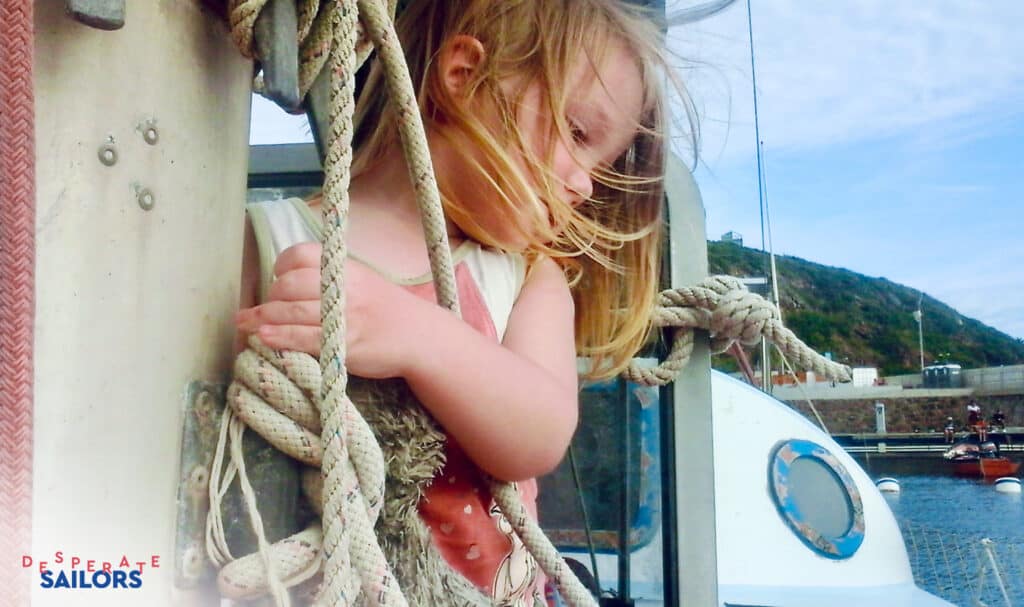
Where Do You Learn to Sail?
Let’s think about what’s the best geographical location to learn to sail.
- We live only once; why not learn seamanship in the Caribbean? Good memories power positive emotions, but you’d better mind the hurricane season. In all other months of the year, the Caribbean sea is rather welcoming for beginners and pleasurable too.
- If a budget is out of the equation, the inner Mediterranean is the world’s easiest sailing pool. But, you carefully check out if the desired jurisdiction has the RYA schools operational. Local schools in Europe may spoil your spiritual holiday; you better believe it.
- If you want a “real” sailing school for “real” men, where only the strongest survive, then you go to Great Britain, the Netherlands, or France. These places feature the roughest seas and the best boats altogether, while France is on this list because of the Bay of Biscay.
- In the United States, however, there is a great number of sailing schools everywhere, where there is sailing. By the way, schools in Florida offer the Caribbean as a destination.
If you wish, I’ve learned to sail in the Mediterranean, and it was splendid, then I practiced in the Caribbean. If I had to choose for the second time, I would definitely prefer the Caribbean from the start.
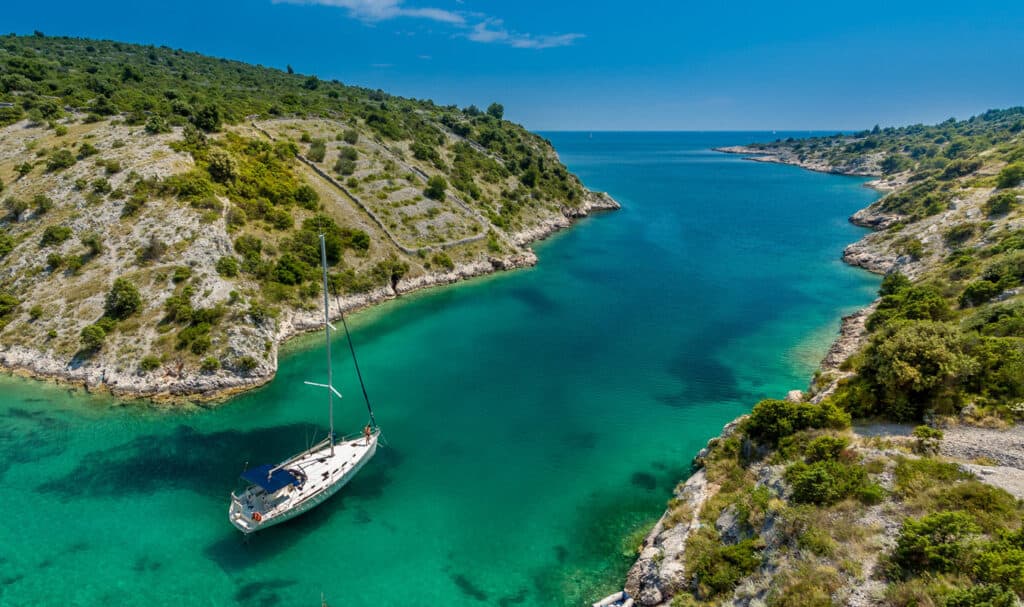
How to Choose a Sailing School?
Just like any other school or any other business – the reputation, the commentaries of the consumers in forums and offline, and real-life friends’ recommendations are the best influencers on your decision.
Apart from that…
Best Sailing Schools Offer Good Boats
Check what kind of boats the sailing school offers for the purpose. They’d better be not too old, well-maintained, solid and sound, and of a reliable manufacturer.
For example, newer ropes you pull with pleasure, while worn ones may stock, the same with the sails, and for most operations that you’ll be performing while learning how to sail.
Best Sailing Schools Feature Small Groups
Alike for any education, it is so important how many people are with you in a group on the same boat, if you are on a group course. The less – the better, which is obvious.
A higher price may occur for the course with fewer people on a boat, but it is worth it. Otherwise, consider taking an individual course or sharing it with a couple of your friends to save on the price.
Solid Sailing Schools Offer a Guarantee
You pay the school for that they learn you how to sail. Check with them in advance, and check again after reading and signing the contract, what will happen if you fail to learn sailing following their course. Some schools really take this responsibility.
This is an uncommon situation, yet such may happen, for example, if anything is wrong with the instructors or a whole Tower of Babel on the boat (that is why we want smaller groups or an individual sailing course).
Best Sailboats to Learn to Sail on
The best sailboat to learn to sail is the sailboat you are going to sail after – this may sound way logical, yet we have other considerations in this regard:
- A 40-46’ boat is the middleman between too small and too big. Even if your future boat shall be a smaller cruiser, it is still worth considering a bigger boat for academic purposes. You won’t regret it, I promise.
- Learning to sail with a 25’ boat, which some schools offer, is a bad idea! When she is this small, she is out of the league. You’ll most probably find yourself very uncomfortable with the bigger one after such a course. Do not follow the sweet prices losing in size of the boat.
- A small boat (say 25-27’) and a bigger boat (say 40-46’) implement a totally different idea of the rope work. The former is a toy, while the latter is already a solid ship. The thickness of ropes, their tension, and the force in hands required, you’d better feel it all.
- Small boats have a lower board over water, which makes the sea surface too reachable, so you risk underestimating the difficulties of the MOB situation. Avoid small boats for learning.
- For the bigger boats – make sure the school won’t load so many students onboard, resulting in you trying each maneuver only once or even less. My instructor made me drill the MOB maneuvers for the whole 3 days! I was mad about him, then realized, in the end, that I was not just saving a rag-doll out of water again and again, but I benefited from a beautiful exercise about controlling a boat in general. Imagine how is it possible with 6 people during a 5-day course?
- As a beginner, you’ll suffer a lighter version of seasickness on a bigger boat. Because she is heavier, she is going to be less shaky. This translates into better concentration on learning material rather than dizziness. Yet, she will be shaky enough, don’t you worry, you won’t miss seasickness completely.
Avoid small boats while you learn to sail.
Avoid crowds on the boat where you learn sailing.
The best sailboat to learn sailing, I suggest, counts 40-46’ LOA.
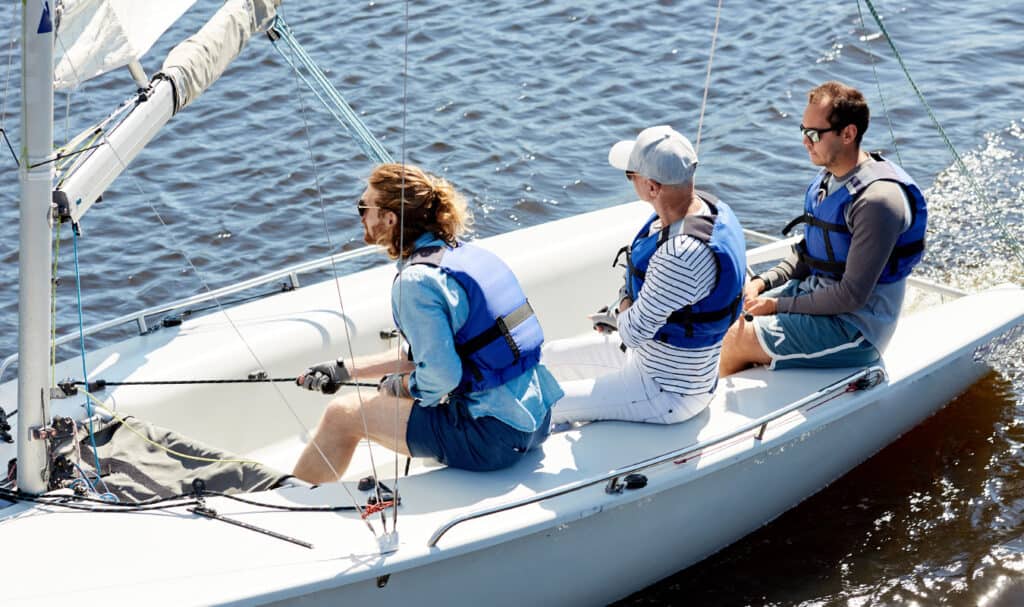
What Else May Help to Learn to Sail
Basically, you learn continuously, where repeating and repeating the material is an essential part of any learning.
You may remember clearly all night lights at sea while you are still in a classroom, but your first nightly navigation may happen years after that classroom, if it’ll ever happen at all. Thus, checking up on the material from time to time will not harm you.
Here we suggest a few handy extensions to what we have already said about learning how to sail.
Free Online Sailing Courses 101
The online sailing courses are not many on the internet, but there are efficient helpers in your how to learn to sail quest. The trusted online sailing courses are usually offered by authorized sailing schools, and you’d better be careful about random ones.
You can take a free online course even before you enter a sailing school’s door; such courses offer partly sailing theory, which you will need to learn anyway.
Online sailing courses are designed for information to be memorized effectively, and they help well with general understanding too. Taking an online course is a good idea either for the sake of double-checking yourself, or learning, once you are only starting your sailing saga, even though you’ll get the same information from an instructor soon.
TIP We double every tool and instrument on a boat, so it’s not in vain to double the knowledge.
They say about the ocean that “everything that possibly can be broken will break.” We rephrase:
Everything that you remember now, you will forget when the time comes.
Why not prevent it?
This is very logical to do so with the same authority which issues sailing licenses. Check out the American Sailing Association (ASA) website for a beginner’s understanding of how a sailboat works and catch some basic sailing terminology.
Computer Sailing Simulations
We do not mean arcades in a 3+ category, of course. But, the realistic computer sailing simulations are as helpful as they are beautiful.
The sad part is that you can count them with the fingers of one hand. However, outstanding quality exists for these games, and surprisingly, the price does not hit the roof.
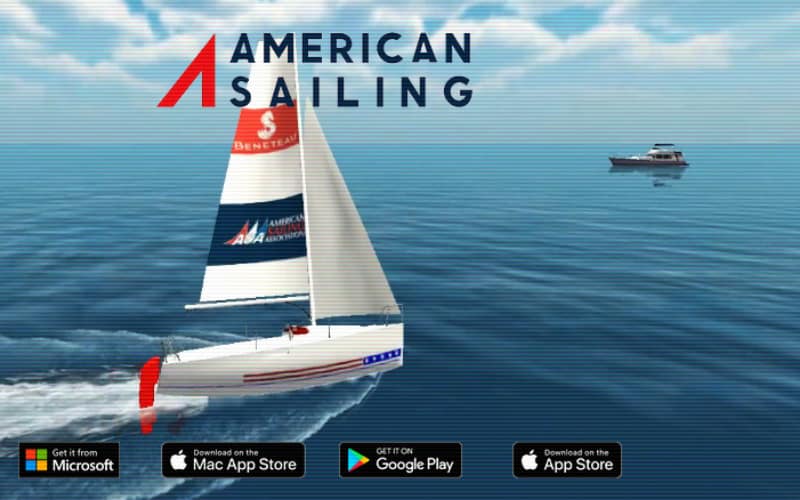
I feel I am falling in love with the ASA applications. We are an independent website, and this is our unbiased opinion. But I affirm that the ships and water in the ASA sailing app make the best pirate games sweat with jealousy! Have a look: at ASA’s Sailing Challenge App.
The sailing is demonstrated from its best side, just like the educational app must be. It is so realistic and engaging; if you try, you’ll understand how the boat and the wind work.
This app is my toy for the off-season, it bears the palm, and it’s worth 4 dollars spent.
Sailing Books About How to Learn to Sail
Sailing books may extend your sailing education greatly! If they are good sailing books, of course.
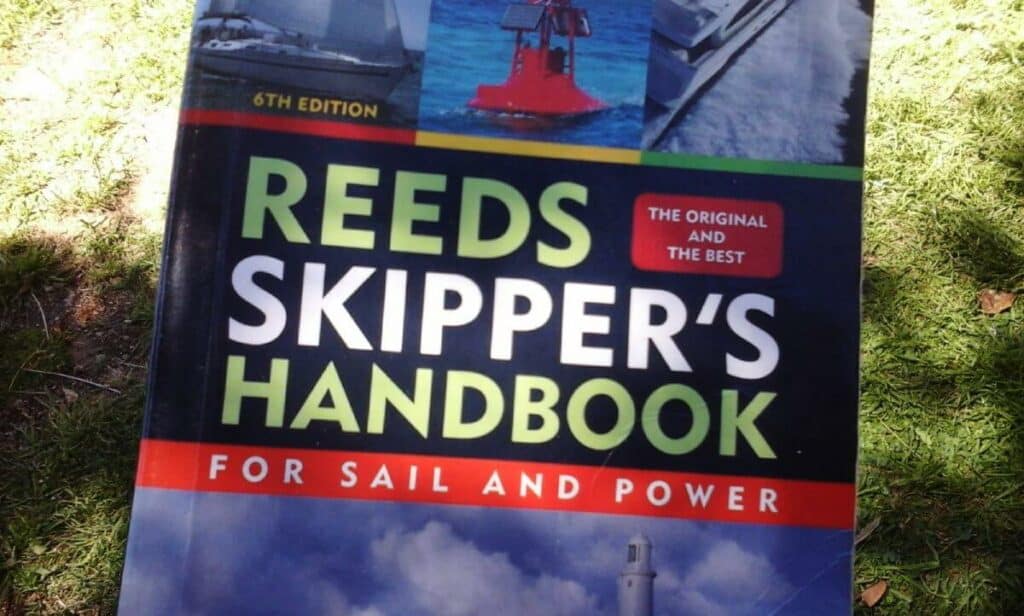
The educational books offer well-structured material and infographics. If you wished my advice, I have a paper version of Skipper’s book in my backpack, having a peek into it at random times for refreshing.
Why paper? Because on the boat, I am into saving my electric supply when the solar panel switches off when it’s dark. Choose a beautiful book you’ll love, as the dull ones exist in the market too.
Reading memoir books written by recognized sailors, who traveled the world, won ocean races, or otherwise gained fame. In such books, you can find many small tiny details, hints, tricks, and warnings, which you can hardly find in academic sailing books.
Though, I prefer when they write sailing blogs on the internet.
Give Time to Your Sailing Classes
Practice is as important as theory. Try asking a random sea-dog about how to learn to sail, and he shall reply: “Practice!”
Even though you are a fast-learner who can absorb all theories in no time, you still need to learn how to apply them for your hands to know the moves, so to say.
You hardly can get enough practice in a short-term course, finding all buoys which you have seen in a book, passing by a sea farm, and all other things. Worth mentioning – you learn something new every time you are at sea! True.
Imagine you have practiced one day with a sailing instructor, and he has loaded a batch of new information to you, like his personal hints and tricks, then you need to process it, sleep with it, and give it a rest in your head. New questions that have arisen you want to address to your sailing instructor, this is how to learn to sail.
You just need a longer possible sailing course to squeeze the most out of your time with a sailing instructor. Most people, including myself, report that 1 month is the best fit to learn how to sail till the confident point, but you go on practicing it all way after, every time, already utilizing your brand-new sailing certificate.
How To Learn To Sail – Summary
So let’s summarize all the knowledge about learning to sail.
- How long does it take to learn to sail?
One month. More precisely, it takes 3-5 days to get a basic understanding and 2-3 weeks to become a skipper. - How much does it cost to learn sailing?
Between $ 200 and $ 700, depending on the course level you are attending. - How hard is it to learn to sail?
Well, it’s easier, faster, and cheaper than you might have guessed. Check it out for yourself. - Where is the best place to learn to sail?
The Caribbean! If not there, the Mediterranean is also great. - What size sailboat is best for learning to sail?
I suggest that the best sailboat to learn sailing counts 40-46 ’LOA. - Can you learn to sail online?
Theoretically and only a theory. There is no substitute for actual sailing.
So now, get it and go sailing. It is a pure pleasure, and learning to sail is a part of it.
Good luck!
